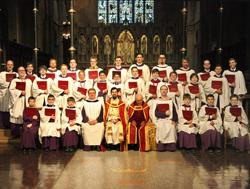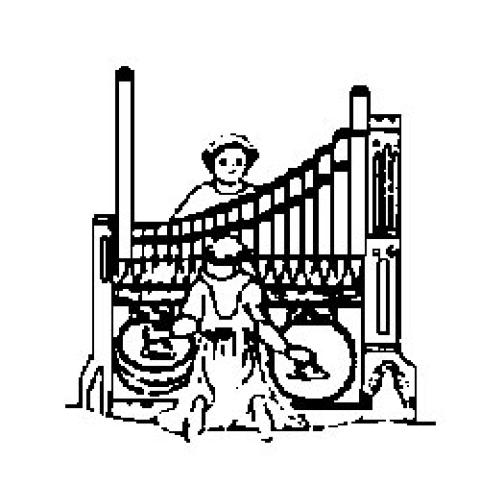
A concert presentation of George Frederic Handel’s celebrated oratorio, Messiah, by the 30-voice The Cathedral Choir of Men and Boys, with period instrument orchestra, will be held at The Cathedral of All Saints (Episcopal), 62 South Swan Street at the corner of Elk Street, in downtown Albany, on Tuesday, December 8, 2015 at 7:00pm.
Under the direction of Cathedral Director of Music, Woodrow Bynum, this performance of Messiah will feature guest soloists Sarah Brailey (soprano), Emily Marvosh (alto), Jack Swanson (tenor), and Nathaniel Webster (baritone). Violinist Aysslinn Nosky, of the noted chamber ensemble Tafelmusik and concert master of Boston’s Handel & Haydn Society, will serve as concert master of the period instrument orchestra.
Established in 1872, the Cathedral Choir of Men and Boys is the oldest continuously singing choir of its kind in the United States. In addition to its annual Messiah performance, the choir sings choral services in the Cathedral during the academic term. The choir has performed with the Albany Symphony, the Boston Symphony, at the Tanglewood Music Festival, and has undertaken several tours to England. The choir is made up of boys (ages 7-15) who sing the treble parts, and professional men who sing the alto, tenor, and bass parts. The quality of their music making, coupled with their uncommon dedication to excellence, has helped make The Cathedral Choir of Men and Boys “Albany’s Boychoir” for 143 years.
Tickets for this concert may be purchased in advance at albanymessiah.brownpapertickets.com (Event #2303892) or by calling 800-838-3006. A limited number of tickets will be available at the door. Ticket prices are $40.00 VIP Seating, $25.00 Adult, $20.00 (65 or older), $15.00 Student, and $10 Child (under age 12).
The Cathedral of All Saints is located at 62 South Swan Street, at the corner of Elk Street, one block north of the State Capitol building. There is ample street parking near the cathedral.
For more information about this musical event or The Cathedral of All Saints, visit www.thecathedralofallsaints.org or www.thecathedralofallsaints.org/music2/The_Cathedral_Choir/Welcome.html, or contact Cathedral Director of Music, Woodrow Bynum at 518-465-1342.



